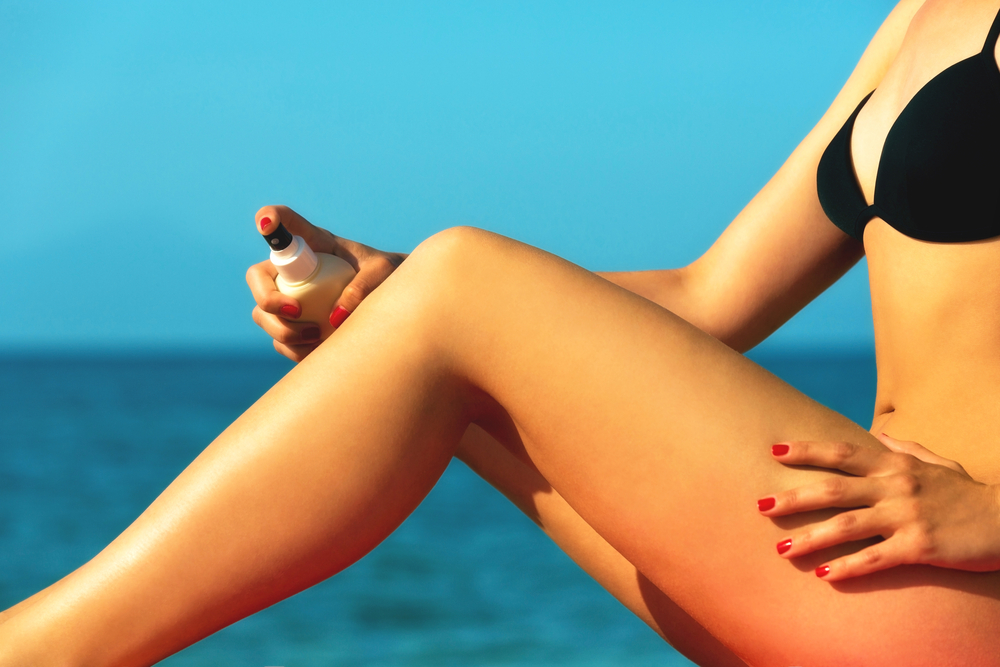With daylight a little less plentiful each day in the Northern Hemisphere until the Winter Solstice arrives, some sun worshippers are scrambling to maintain their precious, but fading, tans.
Traveling to sun-splashed islands continues to be a one (costly and time-tested) option. Meanwhile, sliding onto a tanning bed -- relatively cheap and very affordable by comparison -- remains another (dangerous and foolish) one. Use of these glowing menaces is flat-out unsafe (see our story: Stay Out of That Tanning Bed) so we urge you to stay away from them.
However, there's another artificial option, which while seeming contrived is actually considered safe -- provided that the consumer uses the product smartly and follows its guidelines. So if appearing a version of tan, or golden brown, is important and it helps combat the winter blues, then spray-on tanning may be for you.
Here's what's going on when you, in essence, paint your skin with a color from a can, otherwise known as applying a Topical Sunless Tanner. To begin with, the key ingredient is dihydroxyacetone, or DHA. It "reacts with dead cells in the skin's surface to temporarily darken the skin and simulate a tan," the website for the Mayo Clinic explains. "The coloring typically wears off after a few days" when the dead skin cells naturally fall from the body.
DHA, which works through interaction with amino acids in dead skin, is considered safe by most dermatologists. It's also been cleared by the Food and Drug Administration. Its website states that the ingredient is "approved for external application to the human body, which is the way these products are intended to be used. Consumers can easily avoid inhaling them or applying them to the area of the eye or mucous membrane." Areas of broken skin should also be avoided.
One way topical sprays are not intended to be applied are in tanning booths, and DHA is not approved for use in them "due to the potential exposure to non-FDA approved sites, even when taking precautions, such as wearing nose plugs, goggles, or applying petroleum jelly to the lips." That's according to a paper titled "A Review of Common Tanning Methods" published last February in The Journal of Clinical and Aesthetic Dermatology.
 Another misconception about topical tanners is that because they aren't as "natural" as sunshine, they must present a greater health risk. But that's not true, and experts say they're actually safer then direct sun exposure.
Another misconception about topical tanners is that because they aren't as "natural" as sunshine, they must present a greater health risk. But that's not true, and experts say they're actually safer then direct sun exposure.
“In order to get a natural tan from ultraviolet light, your skin has to be injured,” said Dr. Darrell Rigel, a clinical professor of dermatology at New York University, last year in speaking with Time Magazine. That belief is widely shared in the profession, and it buttresses the view of Dr. Adam Friedman, Director of Dermatologic Research at Montefiore-Albert Einstein College of Medicine, who said about spray-ons that, "When used topically, I think it’s the only safe way to have a tan appearance.”
All of this said, it's essential to understand one important fact: Someone who simply uses a topical tanner is not protected from the sun's damaging rays -- because it does not contain sunscreen.
As a result, the Mayo Clinic strongly warns spray-on advocates -- as well as everyone else -- "If you spend time outdoors, sunscreen remains essential."




